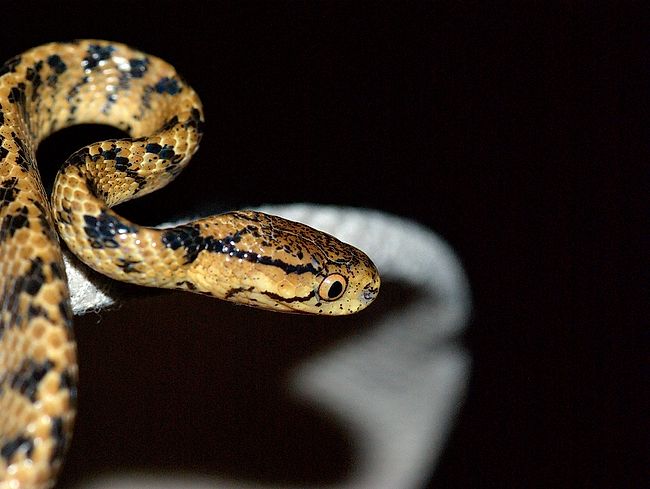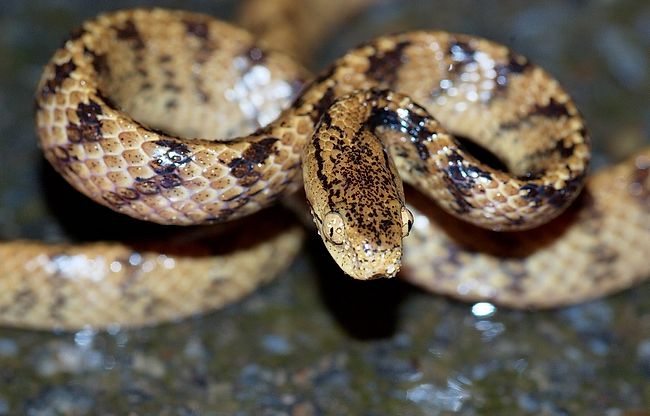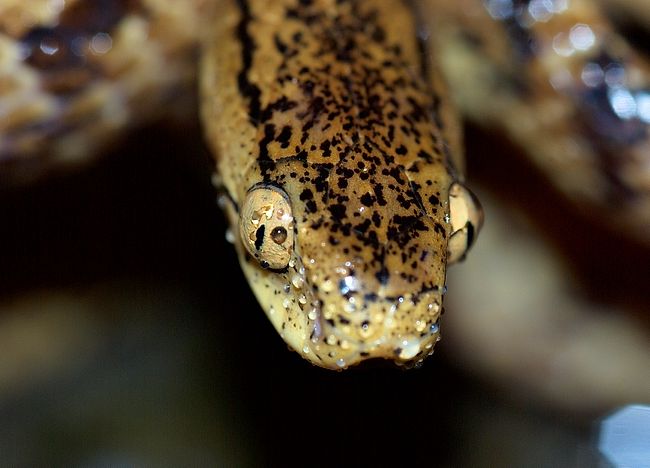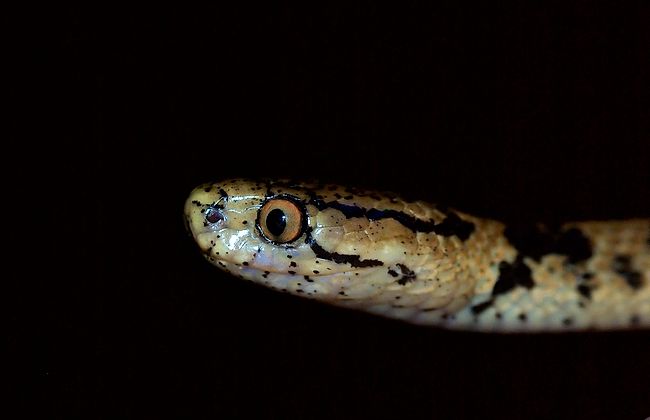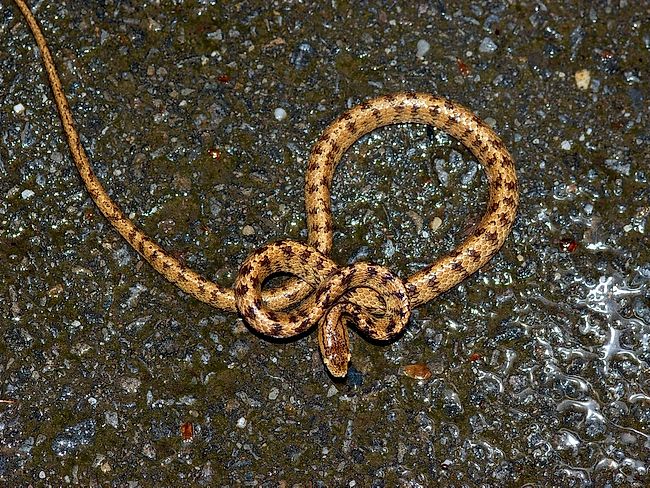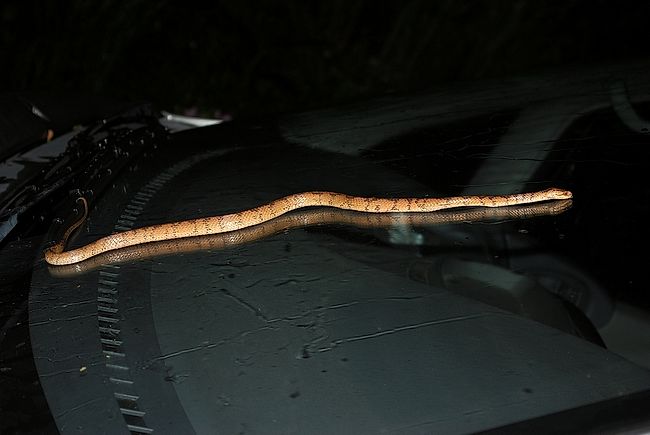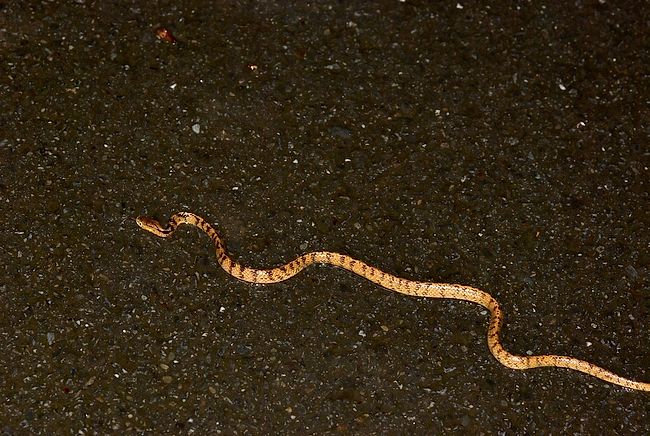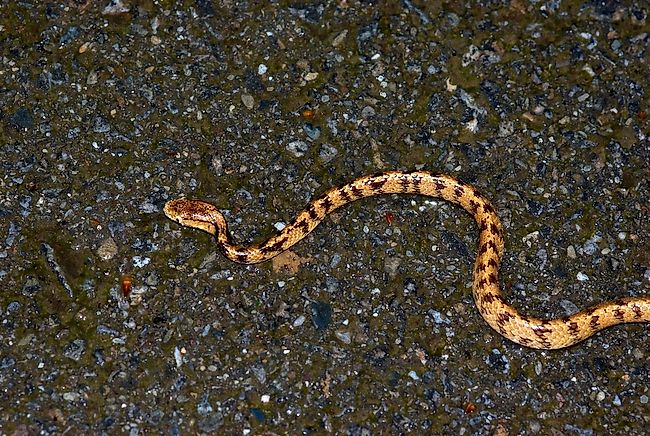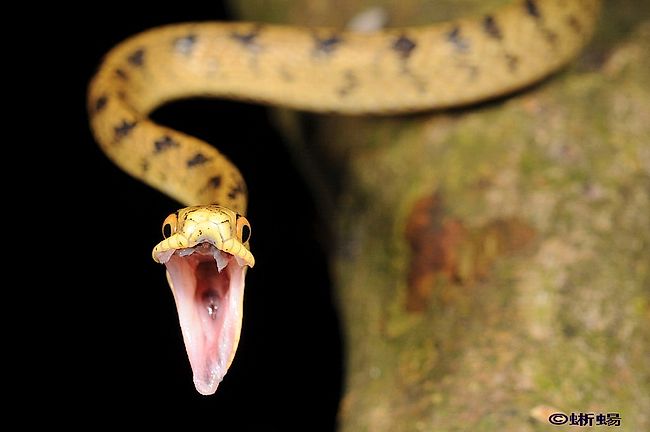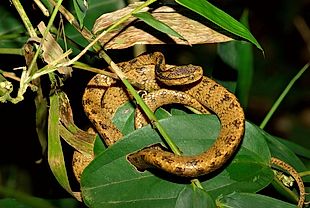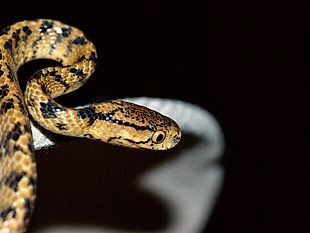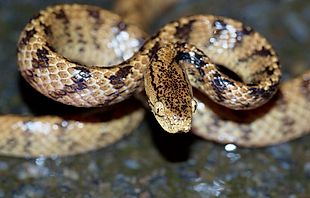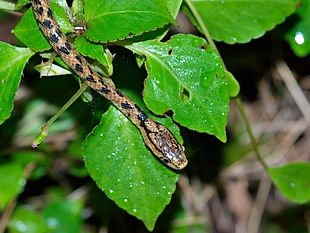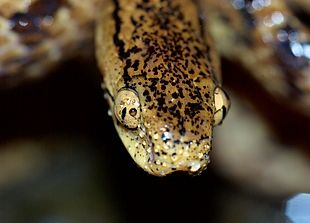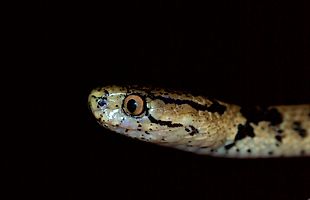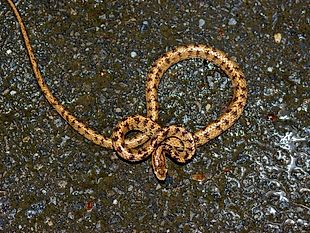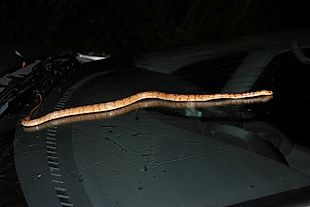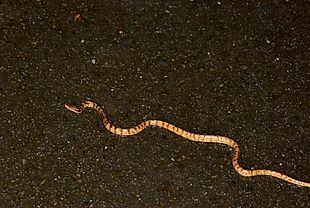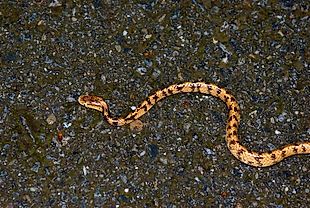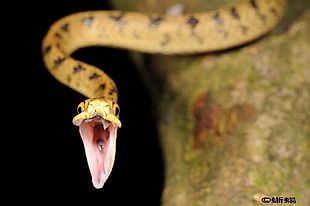Pareas formosensis
Taiwan Slug Snake
台灣鈍頭蛇
保育等級: 保育類 (第二級)
無毒
相關影片
家族
黃頜蛇科,亞洲食蝸蛇亞科
Colubridae, subfamily areatinae
Colubridae, subfamily areatinae
最大體長
70 cm
台灣棲地分布
台灣全島海拔兩千公尺以下可見。
世界棲地分布
台灣特有種。
外觀描述
Small snake; total length up to 70 cm. There are 15 rows of scales, which are smooth in appearance and glossy; however, 5 to 7 rows near the vertebral line of posterior half of body possess feeble keels. Head, which is distinct from neck, is elongated oval to roughly rectangular with blunt snout; body is slender and slightly compressed laterally; tail is long. Eye is medium-sized; iris is light brown, yellow brown or reddish brown with scattered flecks of diffuse black pigment; pupil is black, oval to elliptical at vertical axis, without definite ring or border. Tongue is long, dark gray to black, with fork tips darker than stem. Upper head is light brown with scattered irregular spots of black. There is a distinct line extending posteriorly from the eye to meet a dark design on the neck and oblique black lines which extend posteriorly behind the parietals; overall designs on head form a ''W''. A second line extends from lower eye to the corner of the mouth. The labials are lighter in color, with scattered spots of black. Upper body and tail are light brown to brown, with flecks of black pigment on each scale; there are irregular crossbars of black usually broken or interrupted at vertebral line. Ventral head is dirty white to cream with scattered spots of black pigment. The chin shields extend irregularly across the middle of throat and there is no median groove. Ventral body is slightly darker than ventral head and mottled with large spots of black, some spots in outer fields of scales tend to form longitudinal lines. Anal scale is entire, and subcaudals are paired.
生態描述
鈍頭蛇為夜行性的半樹棲蛇類,喜歡居住在下雨時或下雨後會出現大量蛞蝓與蝸牛供他捕食的潮濕山區。此蛇種耐寒能力很高,有時候可以在寒冷的冬季大雨後發現牠出來覓食的蹤影。
牠的行動能力就跟牠的食物一樣緩慢。卵生。在夏天母蛇會產下每窩 2 - 9 枚的卵。每枚卵長約 2-3 cm 寬約 1cm。幼體剛破但長約 15cm。遭到驚擾時,某些神經質的個體可能會張嘴威嚇。
鈍頭蛇個性非常溫和,導致他在防衛時不太可能會張嘴咬人,但是牠會將帶有惡臭的排泄物遺留在揀起牠的人手上。同時,也有可能會舉起尾巴抽擊侵擾者。
食蝸蛇亞科蛇類大多在陸地上捕食蝸牛與蛞蝓維生。但是牠們並沒有足夠強大的咬合力來咬碎蝸牛殼。當遇到蝸牛時,鈍頭蛇會以下頜尖銳細長的牙齒刺入蝸牛肉,並以上頜固定在殼外,將下頜跟著被咬縮入的蝸牛肉深入殼內到一個程度,但不會過於深入。而是左右移動下頜,將蝸牛肉慢慢的拖出殼外,再吞入肚中。2007年的一個研究發表宣稱,這種奇特的獵食方式,使得食蝸蛇亞科蛇類的牙齒非對稱進化(詳見附註):
"研究發現,食蝸蛇亞科蛇類平均在左下顎牙齒有17.5顆,右下顎牙齒則平均有24.9顆(n=28)。類似的不對稱性頜骨也表現在一個未孵化的蛇,這表示著該性狀是以遺傳為基礎。此外,此亞科蛇類非對稱牙齒在下顎骨12顆的種類遠比14顆的數量多。其中有兩種除了補食蝸牛外還會獵取蜥蜴,另外還有一種是完全只捕食蛞蝓維生。" (Source)
學名與俗名
Pareas = 一種在古希臘的蛇;
formosensis = Formosa 美麗的島嶼,意指台灣。
台灣鈍頭蛇,脊高蛇。
附註
另有一種紅眼睛的個體,正在研究中。研究人員試圖分辨是否為另一獨立物種。
相關連結
附註
摘要:
外部構造不對稱被發現在不同的物種上,有不同的生態意義與功能存在。有些專吃蝸牛的節肢動物,在口器上有不對稱的排列或是順向的排列,而這樣的排列可以增進他們進食的效率。因為在各種蝸牛族群裡,順時鐘方向的殼數量佔優。這裡我們收錄了以吃蝸牛為生的不對稱牙齒脊椎動物。研究發現,亞洲食蝸蛇亞科(Pareatinae) 中的蛇類,除了不以蝸牛為主食的個別種類之外,其他蛇種右下頜處的牙齒都比左邊多。在餵養鈍頭蛇吃蝸牛的實驗中,顯示出了此種蛇類吞食右旋蝸牛的速度明顯比左旋快速,甚至有些左旋蝸牛會導致鈍頭蛇吞食失敗。我們的研究結果顯示了,不對稱的牙在生態上是一個創新,發展出了獨特的天敵機制。10.1098/rsbl.2006.0600
翻譯:周信甫












